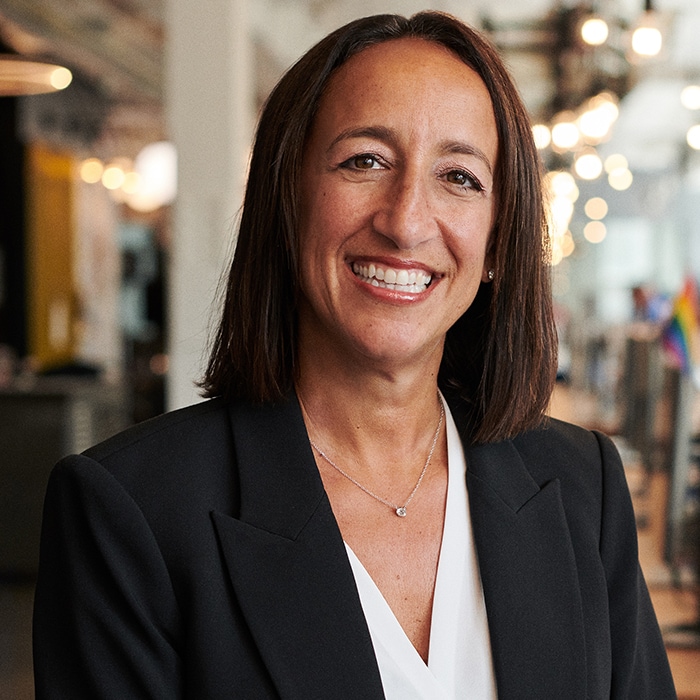The great retail bifurcation has been saved

The great retail bifurcation Why the retail “apocalypse” is really a renaissance
14 March 2018
 Kasey Lobaugh United States
Kasey Lobaugh United States Christina Bieniek United States
Christina Bieniek United States Bobby Stephens United States
Bobby Stephens United States Preeti Pincha United States
Preeti Pincha United States
Is the retail industry—especially the traditional store—on the verge of apocalypse? In this excerpt of our report on the state of the retail industry, our in-depth survey tells a more nuanced story, one based on a stark income bifurcation.
An industry on the verge of collapse?
Learn more
In a hurry? Read a brief version from Deloitte Review, issue 23
Listen to the podcast
Download the full report
Explore the interactive and infographic
Subscribe to receive more Consumer Business content
Create a custom PDF or download Deloitte Review, issue 23
The retail industry appears to be going through an existential crisis. Every day, media and business journals declare a retail apocalypse is upon us: It would seem as if many traditional retailers have stopped growing, as shoppers, especially millennials, make more and more of their purchases online.
However, in this excerpt of our report detailing an in-depth study conducted over more than a year, we discovered that the situation is much more nuanced than a retail apocalypse. Current economic conditions and technological advances have influenced consumer behaviors so that the debate is no longer simple online vs. in-store, or millennials vs. older generations. Instead, income—specifically, a stark income bifurcation—may be the key.
The great retail bifurcation
Deloitte undertook an extensive research process, devoting the better part of a year to examining the retail environment: studying official data; conducting a survey of over 2,000 participants; and drawing on the knowledge of our clients, industry contacts, and our own industry specialists. Our key finding: “Balanced” retailers (which deliver value through a combination of price and promotion) are generally doing worse than either price-based retailers (which deliver value by selling at the lowest possible prices) or premier retailers (which deliver value via premier or highly differentiated product and/or experience offerings). Specifically, premium retailers have seen their revenues soar 81 percent over the last five years, while price-based retailers have seen their revenues steadily increase 37 percent over the same period. This contrasts with balanced retailers, whose revenue has increased only 2 percent.1 What’s more, consumers are more likely to recommend premier or price-based retailers than balanced, suggesting that retailers at either end of the spectrum are more in tune with the changing needs and are better at meeting the expectations of consumers than those in the middle.
Why the perception of a retail apocalypse if the stores at the extremes are doing so well, including traditional brick-and-mortar retailers? One possibility is that store closures among balanced retailers—which account for the majority of closures and bankruptcies—are driving this perception. Price-based and premium retailers, on the other hand, have been opening more stores over 2015–2017 than closing them.2
A backdrop of prosperity
That balanced retailers are typically doing worse than off-price and luxury stores may come as a surprise, especially considering that macro US economic conditions, consumer spending, and industry trends tell a positive story of a consumer operating in a healthy financial landscape. Median income is now higher than it was in 2007, even before the Great Recession;3 US GDP growth has rebounded;4 and growth in retail spending has outpaced even GDP growth.5
Various retail sectors also showed many bright spots: Home furnishings, beauty/cosmetics, and home improvement all grew over the past five years. While conventional wisdom might argue that such growth excludes brick-and-mortar channels, the opposite is actually true: Retail across all channels continues to grow. The vast majority of retail sales—91 percent—still take place in brick-and-mortar stores, which means that online shopping represents just 9 percent of total retail sales. Even though the online channel is projected to grow 11.7 percent, in-store sales are also projected to grow 1.7 percent—hardly the stuff of apocalypse.6
Following the consumer
But if macroeconomic and industry data indicates a healthy picture, looking more closely at the consumer—and specifically, consumers’ spending behavior as a reflection of their economic well-being—provides a different view. Despite positive macroeconomic trends, it’s actually been an abysmal period for most Americans. For the past 10 years, the lower 40 percent income group has found itself struggling to keep up with expenses, while the middle 40 percent has seen its income shrink.7 Thus, for 80 percent of consumers, the last decade has generally represented a dramatic worsening of their financial situation. Income and net worth gains are disproportionately going to the highest-income group.
Moreover, not only has the income level of the lower cohort been stagnant, the share of their income spent on non-discretionary categories has skyrocketed: Health care costs have risen 62 percent, education 41 percent, food 17 percent, and housing 12 percent.8 These increases have hit the lowest-income group the hardest. Basic necessities now, for this first time in a decade, take up more than 100 percent of a low-income family’s budget.9
What this means for traditional retailers is that there is greater competition for discretionary dollars. For the 80 percent of the shoppers who face strained budgets with limited disposable income, price sensitivity is paramount—these consumers may think twice about buying a new pair of slacks and thus may be drawn more to price-based retailers.
Economic considerations based on their own perceptions (and realities) of financial well-being profoundly affect consumers’ spending behaviors across channels and categories. For example, we found that the likelihood of making an online purchase versus buying in a store is highly correlated to income. Low-income consumers are 44 percent more likely than their wealthier counterparts to shop at discount retailers, and also more likely to shop at supermarkets, convenience stores, and department stores. High-income consumers, on the other hand, are 52 percent more likely to shop online (based on self-reporting).10
What about millennials?
Millennials are often lumped together and portrayed as the source of disruption to everything from golf to dating to retail. Their behaviors are commonly listed as being addicted to their smartphones and shopping only online; spending on experiences, not goods; and driving massive shifts in category spend. However, our analysis showed that consumer behavior is based more on income rather than generational differences. Below-income and middle-income millennial consumers behave very much in line with the other members of their income cohort—so not that different at all. Instead, high-income millennials were the ones skewing the “average” behavior of the millennial group overall.
A retail renaissance
A sea change is clearly taking place in the retail market—but it is not the retail apocalypse. In our view, it is instead a renaissance—driven by huge shifts in economics, competition, and consumer access to options, all fueled by exponential advancement in technology. And in this renaissance, the winners appear to be those retailers that can capitalize on consumers’ experiences of their economic well-being—or lack thereof—to offer a value proposition that aligns with consumer needs.





